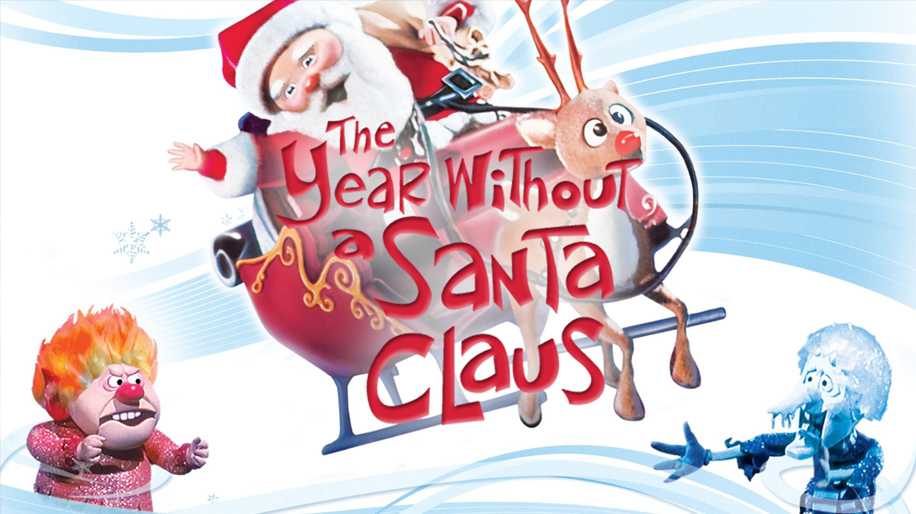October is Down Syndrome Awareness Month, a time to educate and advocate as well as celebrate those individuals with Down Syndrome. I had a chance to speak with John C. McGinley today about one of the most challenging yet rewarding roles in his life.
It isn’t Dr. Cox from Scrubs or Stanley Miller from his new horror comedy series Stan Against Evil. This particular role was one that hit close to home, the father of a very special young man named Max.
That’s My Entertainment: Let’s go over the story of Max. When you first discovered that diagnosis, what were your original thoughts?
John C McGinley: I had no idea what Down Syndrome was, certainly not clinically. Emotionally…I didn’t know anything. We went to the hospital…the clear diagnosis from the blood protein and the sonogram was that this was going to be a beautiful little girl. We did not have the amino because we were discouraged from having the amino because Max’s mom (Lauren Lambert) was very healthy and I was healthy and there was no history of challenges in either one of our families, and so it was all supposed to be a Norman Rockwell painting and then Max came out, he was not a girl and his twenty-first chromosome had tripled so it was the equivalent of being smashed over the head with a cosmic hammer and the disorientation of it all.
The first person in the room as Max was in the neonatal intensive care unit was a representative of the state of California who said “the state would be more than willing to take charge of this individual if that’s what we wanted.” And I kicked him out of the room. I still don’t know what he was talking about never had the spine to look into it. Then you kind of bury your head in the sand for a while.
There is a trajectory that involved a woe is me component and sooner or later you get your head out of the sand and you see this little kid looking up at you and his need for help and intervention transcends any other pity party that you might invite yourself to and you start to get involved. You start to get second and third and fourth opinions from a medical community that would largely advocate for over medicating that population.
TME: One of the things you talked about in your 2014 interview on Hallmark’s Home and Family about raising a child with special needs is Integrated parenting and an integrated family. Can you tell me a little more about that concept?
JCM: I found that the parenting trap there is to lean into one side or the other. Billie Grace and Kate are the politically correct term is typical kids and Max has Challenged. To lean too hard into accommodating Max’s challenges and compromising Billie Grace and Kate is tricky and then to lean too hard into the Billie Grace and Kate capacity to learn and leave Max behind is a trap. So there is a sweet spot in the middle there that you can only find when you are in it. There is no guide; You can only find it when you are in it.
This is something that you did through trial and error? Did you have had from medical professionals? How did you discover this?
I would say between Max’s mom who is a phenomenal advocate, my sensibilities and connections to the medical communities, and the Global Down Syndrome Foundation, mixed with Nicole’s influence; that’s a lot of incredibly clear thinking, an objective adult intervention that if you can assimilate all that input you have a chance.
In raising a typical teen/young adult there are social issues that can arise in their development. What were some of the social challenges you had raising a teen/young adult with down syndrome?
The hardest thing to wrap your head around and the three dirty little secrets of overall with down syndrome is that its hard as a teen going forward to have age-appropriate friends. I can’t be a hypocrite on this. I didn’t have any friends who were born with Down Syndrome when I was 16 or 17 years old. It’s heartbreaking and it’s very hard to see this community largely left to fend for themselves largely in a friendship trajectory and so you rely on family, a lot. Max depends on Billie Grace, Kate Max’s mom, and Nicole. You have to generate friendship and that’s a really hard one to swallow because you certainly can’t force a teenager to be your son’s friend, nor would you want to but that one is a really hard man.
TME: Do you feel now that Max is 21 and do present-day medical care and medical professionals better equipped to care for individuals with special needs, specifically down syndrome?
JCM: No. Certainly not. Not unless you have the web of resources to get a second, third and sometimes fourth opinion until you arrive at a caregiver in the medical community who is at least peripherally versed in how to treat someone who’s 21st chromosome has tripled. Since that is such a low priority in any medical program, it’s on the parents or on the caregiver’s shoulders to find someone who is appropriate for their son or daughter. It’s really hard and it’s profoundly disturbing.
John involved himself with an organization that is to significantly improve the lives of people with Down syndrome through research, medical care, education, and advocacy. This organization was led by CEO and founder Michelle Sie Whitten who also has a child with Down Syndrome. John recalled how he got involved and became one of the members of the board.
TME: Tell us about your history with the Global Down Syndrome Foundation.
JCM: The groups I had been with have largely been Kumbayaa let’s hold hands and make pamphlets. I wanted to be more proactive and more aggressive. I saw my friends who were working with aids advocates and breast cancer advocates and wondered why aren’t we doing something like this.
Michelle Sie Whitten and I met, and told me “we have all four lobbyists on staff in Washington D.C., and we’re building a wing down at Children’s Hospital in Denver in the Linda Cyrnic institute as well as the Sie Center for Down Syndrome.
We’re a researched and medical based organization who just want to improve the people with Down syndrome lives through research and medicine.” Then I was in. I wanted to be with people who are aggressively attacking how to make these people’s lives better and that is what happens at Global.
TME: Global also does a be beautiful be you a fashion show that you just came back from. Tell me a little bit about that.
JCM: It is a now a five-year tradition with my family. It is the single biggest fundraiser for people with down syndrome and down syndrome research on the whole planet. And everything that could have possibly gone right this year did. At these type of events, it’s a had thing to authentically say. From Jamie Foxx to Colin Farrell and some of the other celebrities that we were lucky enough to have joined us, and the lineup of models all of whom are people born with down syndrome, it was one of the great nights of my life.
TME: Where did the Spread the Word to End the R-Word Movement originate?
JCM: It started almost ten years ago now, Tim Shriver invited me up to the Special Olympics World Winter Games hosted in Boise Idaho and I went to events and then Tim invited me to a youth leadership activation conference which is a component of every world games.
In this Youth Leadership Activation conference, there are about 200 of the athletes were also self-advocates. It was a whole nother concept I had to wrap my head around in a copious way. All these self-advocates in this auditorium and they tabled different ideas and different conflicts that were impacting them all around the world. And to a person from South Africa to England, to Australia, the kids from South America… a lot of the athletes said they were fed up with the word retard/retarded.
And we started to craft this campaign and then the athletes shaped it and we made it viral and all of a sudden it became a movement. Understand it’s baby steps. The r-word retard and retarded are used as much today as ever. And so it’s baby steps for us, but we feel we are moving in the right direction.
TME: People feel awkward when they have to interact with someone with special needs. Whether it’s their parents or the individual themselves. As a parent how would you suggest an individual approach you or individuals with intellectual disabilities?
JCM: There is no real pragmatic answer to that. I would approach them with kindness and compassion. Try not to put them on the spot.
That’s how I approach people with the r-word because if you tell people how to talk their emotion and spiritual fists are gonna go up and so I invite people and just ask people if there isn’t a better way to say what they just said. For example, if someone says “… the party was retarded” and they say “what?” and I just say “you just said the party was retarded”. And they say, “Oh I didn’t mean anything by it” and you just say.” Well, that’s really offensive to us.” Now all of a sudden we are having a conversation. It’s born out of the entre into..” isn’t there a better way to say that?” Then the person invariably says what? They will never say F-you. And I just find that in engaging in dialogue especially when you want to shape language which people are entitled to use any way they want unless they say a fire in a movie theater. When it comes to people using the r-word the fact of the matter is that they are liberally allowed to use it, so you gotta meet people halfway on that one.
John is an international spokesperson and board member of the Global Down Syndrome Foundation as well as for the Special Olympics and the End the Word movement. Currently, he stars as the reluctantly retired sheriff of Willard’s Mill on IFC’s horror comedy Stan Against Evil premiering on October 31st 10 pm E/P.
You can follow him on twitter @JohnCMcGinley
There are many more questions that were left unanswered but there is a lot of information available on the organization he mentioned for those parents and caretakers who are seeking more information on what options are available for people with Down Syndrome for care, education as well as support groups that are available all over the world. There are even downloadable .pdfs in multiple language formats for educational purposes.
Global Down Syndrome Foundation: https://www.globaldownsyndrome.org/
Twitter @GDSFoundation
Facebook:https://www.facebook.com/GDSFoundation/
Instagram: https://www.instagram.com/globaldownsyndrome
For those wanting to get involved and participate to create communities of inclusion, there are two sites, the Special Olympics as well as the Spread the word to end the word site listed below. Both are great informational resources.
Special Olympics: https://www.specialolympics.org/
Twitter:@SpecialOlympics
Facebook:https://www.facebook.com/SpecialOlympics/
Spread the Word to End The Word:
Twitter @Endtheword
Facebook:https://www.facebook.com/EndtheWord/

Movie
‘Mufasa: The Lion King’ Will Leave You Breathless

“Mufasa: The Lion King” is a visually stunning addition to the beloved Lion King franchise, offering a fresh and emotionally resonant take on the origins of one of Disney’s most iconic characters. The film beautifully explores Mufasa’s journey, balancing heartfelt moments with touches of comedy that lighten the mood and make the story accessible to audiences of all ages. The animation is breathtaking, capturing the vibrant landscapes and lush environments of the Pride Lands, adding depth to Mufasa’s character and his relationships.
The storytelling is compelling, effectively pulling at the heartstrings while providing insights into Mufasa’s character before he becomes the legendary king. However, the setup for Scar’s betrayal feels somewhat underdeveloped, lacking the deeper motivation that could have enriched their complex brotherly relationship. This missed opportunity leaves a slight gap in understanding Scar’s actions, which could have elevated the dramatic stakes.
The musical score is impressive, featuring memorable songs that enhance the emotional impact of pivotal scenes. While there are several standout tracks, one song, in particular, resonates deeply and is sure to linger in viewers’ minds long after the credits roll. Overall, “Mufasa: The Lion King” is an amazing film and a worthy addition to the Lion King lore that manages to deliver both laughter and tears, offering a rich tapestry of storytelling that fans will appreciate.
Movie
Is ‘Kraven the Hunter’ a Total Letdown?

“Kraven the Hunter,” directed by J.C. Chandor, aims to introduce a beloved Spider-Man villain to the big screen, but unfortunately, it falls short of expectations. The film suffers from noticeable issues, notably an overuse of ADR (Automated Dialogue Replacement), which detracts from the authenticity of the characters’ interactions and contributes to an uneven audio experience. This technical flaw is compounded by rough storytelling that feels disjointed and lacking in coherence, leaving viewers struggling to connect with the narrative.
Aaron Taylor-Johnson delivers a commendable performance as Kraven, showcasing the character’s gritty nature and complex motivations. His portrayal has potential, and it’s evident that he could elevate the character far beyond what is presented with a stronger script and direction. However, the absence of Spider-Man, a central figure in Kraven’s lore, leaves a void that the film struggles to fill. Without this critical connection, the plot meanders and fails to create the tension or stakes that fans of the superhero genre crave.
Additionally, including Rhino as a villain feels like a missed opportunity; he is presented more as a gag character with limited screen time, undermining any sense of threat or depth. For the average moviegoer, “Kraven the Hunter” might entertain but ultimately feels like a mediocre viewing experience. Comic book fans, however, may find disappointment in this lackluster attempt to create a solo character film. Instead of an exhilarating dive into Kraven’s world, the film presents a watered-down version, leaving audiences wishing for a more cohesive vision that honors its comic book roots.
Movie
A Brief Review and History of A Year Without a Santa Claus

A Year Without a Santa Claus, the 1974 stop-motion holiday classic produced by Rankin/Bass, is a heartwarming and whimsical tale that has cemented its place in holiday traditions. Based on Phyllis McGinley’s 1956 book, the story revolves around a disheartened Santa Claus who, feeling unappreciated, decides to take a year off from his Christmas duties. It’s up to Mrs. Claus and a pair of well-meaning elves, Jingle and Jangle, to reignite the Christmas spirit and show Santa the world’s unwavering belief in him.
The movie is beloved for its unforgettable characters, especially the bickering Miser Brothers, Snow Miser and Heat Miser. Their catchy, vaudeville-style musical numbers, “Snow Miser Song” and “Heat Miser Song”, are so iconic they’ve become cultural touchstones, often parodied and celebrated decades later.
Directed by Arthur Rankin Jr. and Jules Bass, the film continues the duo’s tradition of stop-motion magic, blending heartfelt storytelling with quirky humor. The voice cast, featuring Mickey Rooney as Santa and Shirley Booth as Mrs. Claus, delivers standout performances. Booth’s warm narration was her final acting role before retirement, adding a layer of poignancy to the film.
Initially released on December 10, 1974, on ABC, the special didn’t immediately achieve the legendary status of Rudolph the Red-Nosed Reindeer. However, it gained a dedicated following through annual holiday airings, nostalgic appeal, and its distinct charm.
The film’s themes of hope, unity, and rekindling joy remain timeless, making it a perennial favorite for audiences of all ages. Its blend of humor, catchy songs, and a touching message about believing in magic and goodwill ensures its enduring legacy during the holiday season.
For fans of holiday classics, A Year Without a Santa Claus is a must-watch that never fails to warm hearts and spread cheer.



